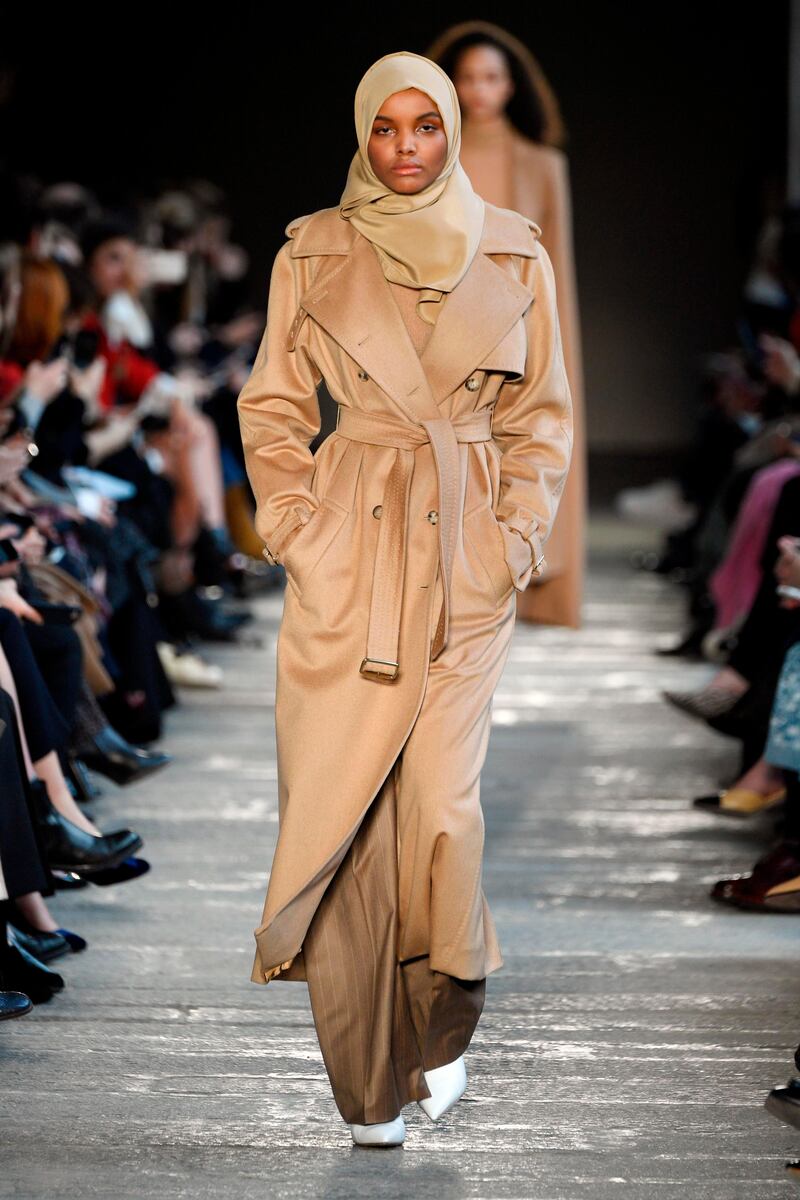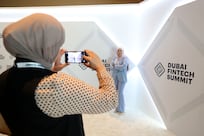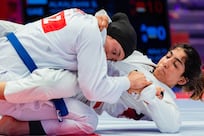"Halal modelling; sounds like an oxymoron to me. Best to stay away from it," was one user's answer to a forum post on Ummah.com, which asked if modelling for a charity event would be permissible in Islam. Another user replied: "Women wear hijab to conceal their beauty. Not to flaunt it where men can see." Another sarcastically compared the term "halal modelling" to "halal alcohol".
Diversity is on the rise in the fashion industry, and 2017 has brought the "modesty" versus "modelling" debate to the fore. Somali-American fashion model Halima Aden has proved that you can wear the hijab and be a successful, even mainstream, model. And yet, while Aden may be the poster girl for the empowered Muslim woman, the concept of modelling is much-contested.
The root of the question is: if modesty is a fundamental attribute of a Muslim woman, can modelling, which is all about drawing attention to oneself, be acceptable? And if someone does decide to model, stipulating that she'll wear only modest clothing, where does she draw the line?
It all started when a 19-year-old Aden competed in the Miss Minnesota USA pageant last year, wearing a hijab and fully covered clothing, including a burkini during the pageant's swimsuit segment. A few months later, Aden signed with top agency IMG Models, and made her runway debut at Kanye West's Yeezy Season Five presentation. From there she skyrocketed, walking the runways for Max Mara and Alberta Ferretti, starring in fashion campaigns, including one for UAE-based luxury e-commerce site, The Modist, and appearing on the covers of Carine Roitfeld's CR Fashion Book, Allure magazine and Vogue Arabia.

Alia Khan, chairwoman of the Dubai-headquartered Islamic Fashion & Design Council (IFDC), is thrilled that a hijab-wearing model is achieving so much success and exposure. “It can actually be very favourable for a hijabi model to be out there modelling, because when she presents herself, she’s rebranding the image of the Muslim woman,” says Khan, who also wears the hijab. “Naturally, everything has its limits and modesty definitely has its limits, so as long as she understands what the parameters are, I don’t see any issue with it.”
For her Vogue Arabia cover last month, Aden is pictured perched on a stool, dressed in a form-fitting black, floral, short-sleeved dress, with a turtleneck underneath, and a scarf, tied turban-style, around her head. Though her skin is covered, she sits in an arched-back pose that outlines the curves of her body. Male make-up artist Hung Vanngo is pictured working on Aden’s smoky-eyed look.
Khan says many hijab-wearing models wouldn’t normally allow male make-up artists to touch their skin. “They seem to always request women, and that’s never been a problem for us because most make-up teams have men and women. I think it’s something that can easily be accommodated in the industry today,” she adds.
In the case of the Vogue Arabia shoot, Vanngo is a world renowned make-up artist who has worked with countless publications and celebrities, and seems almost as much a star of the 12-page fashion shoot as Aden is, himself appearing in more than half of the shots. Or perhaps the prospect of a male make-up artist wasn’t a personal issue for Aden – Muslims are a diverse community, and many view teachings to be open to interpretation and dependent on intent. Perhaps Muslim models, like any other models, have to pick and choose their battles, to find a happy balance between mainstream modelling and modesty. Aden’s budding career coincides with an influx of hijabi fashion bloggers on social media – who may not be professional models, but model nonetheless, for a digital audience, and are sometimes on the receiving end of religious censure.
Traditionally, a modest outfit is one that doesn’t draw attention to the body. Khan explains that, to her, even if the skin is covered, attire that is very fitted wouldn’t conform to most definitions of modesty. As such, layering has long been popular with practicing Muslim women. Conveniently, the combination of a long-sleeved shirt under a strappy top is a style that’s currently on-trend, and some Muslim fashion bloggers are keen to show that it’s also possible to wear garments like bustiers, corsets and crop tops, while still remaining technically covered.
But is an outfit modest, even if the wearer’s skin is covered? Khan doesn’t think so. “I personally have deemed these to be inappropriate,” she says. “You might as well have a highlighter marker going right over the body parts of the women, like in the chest area, and personally I think that crosses the line in the cases that I’ve seen.”
Seima Rahman, a 20-year-old British-Pakistani who is a business and marketing student in the United Kingdom, admits to being a Muslim fashion "influencer" and recognises that her fellow Muslim followers take style cues from her outfit posts. In terms of skin, Rahman shows only her feet, ankles, hands and wrists, and sometimes wears three-quarter-length sleeves. Through layering, her outfits often feature leather leggings, off-the-shoulder crop tops, thigh-high suede boots and fishnet stockings – attire that is not typically categorised as modest. Although Rahman has close to 15,000 followers on Instagram, some take offence to her sense of style, arguing that leggings and bralette-style tops, even when layered, still draw focus to the feminine form.
"Where is the modesty in this??? Might as well remove the scarf"; "What kind of Muslim? Shame on you"; and "The outfit is great and all, but this is not hijab" are a few of the critical responses to Rahman's pictures.
More on modest fashion
- Modest fashion: A look at the rising popularity and why labels are turning to the Middle East for inspiration
- Islamic clothing is changing the fashion world. But it will not dismantle the desire to judge women
- Hijabi social media star Ruba Zai collaborates with luxury labels
Rahman says that she has grown used to the constant nit-picking. "It's so common now. I do read the comments and I have learned to ignore them. I think criticism will always be there, especially for Muslim fashion bloggers. I deal with it by completely ignoring it and by being confident in what I do and what I wear," she says.
Rahman's critics would argue that the inherent purpose of modesty cannot bend to cater to international fashion hype, and that not all style trends can be repurposed into a modest wardrobe – especially clothing that may cover the skin, but does not detract attention from the body. But modesty, counters Rahman, shouldn't be solely judged by clothing. "It's not just about being covered, but also about the way you behave and act."
The industry is evolving, and gears are shifting to make space for aspiring Muslim models. Last year, Indonesian designer Anniesa Hasibuan became the first label to dress her models in hijabs on the New York Fashion Week runways, and the city is also home to Underwraps Agency – the first modelling agency for modesty-conscious women. It negotiates female-only dressing rooms, privacy from males and full-length dressing robes on behalf of its clients. Just last month, IFDC introduced a modest-wear segment at Italy's Torino Fashion Week. But Khan notes that genuine hijab-wearing models are still scarce. "There's very little availability, so that's when we put hijabs on normal, mainstream models," she says, adding that IFDC's website has a section where would-be Muslim models can sign up.
There are many deterrents to aspiring Muslim models – cultural norms, family pressures, long-held prejudices and unsuitable industry standards are just a few examples. Putting yourself out there, whether on runways or in the digital realm, makes you vulnerable to being judged. That is one reason why many local fashion bloggers from the GCC tend to crop out their faces from their pictures, or remain anonymous on social media, thus avoiding the controversy altogether.
There is no rulebook with hard and fast guidelines or set parameters dictating how to dress or behave as a hijab-wearing Muslim model in the fashion world. It's uncharted territory, to be explored only by those willing to test the waters, and to open themselves up to inevitable critique – be it from religious scholars, fashion editors or anonymous social media followers.





